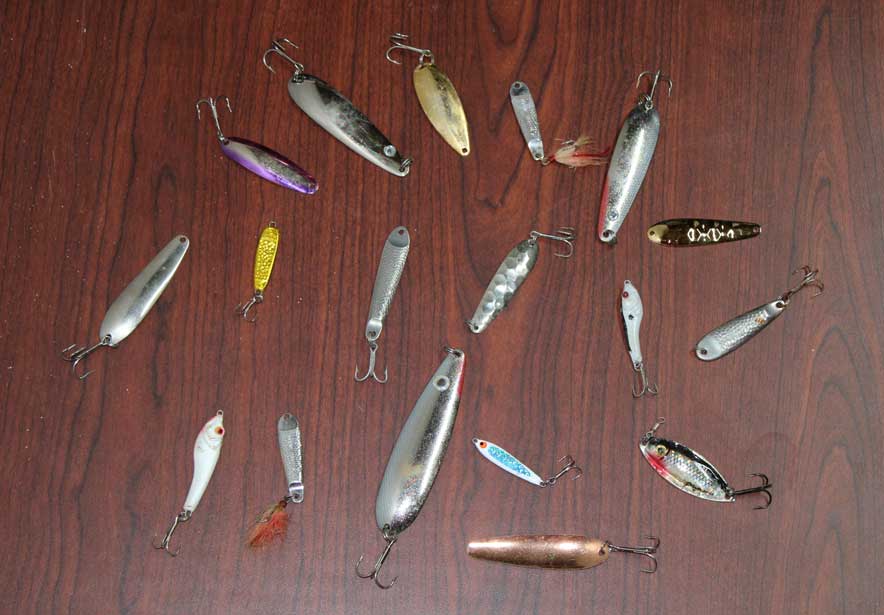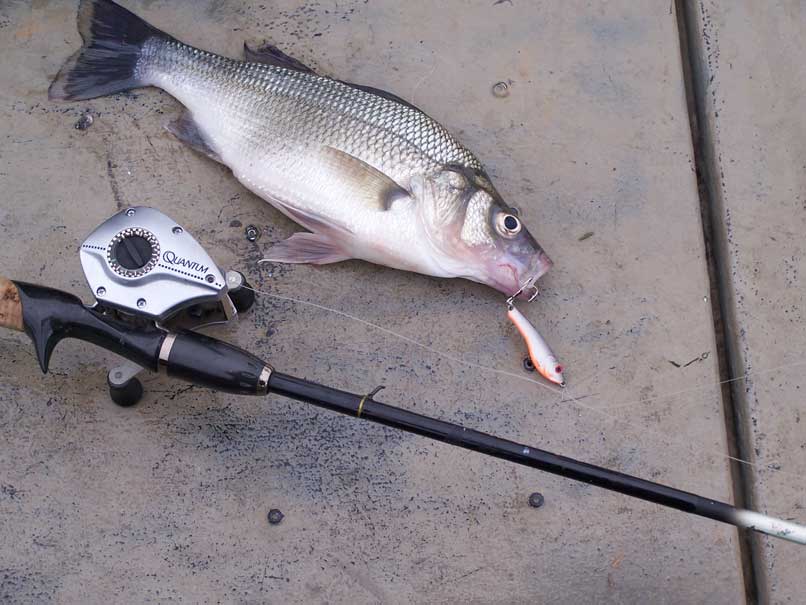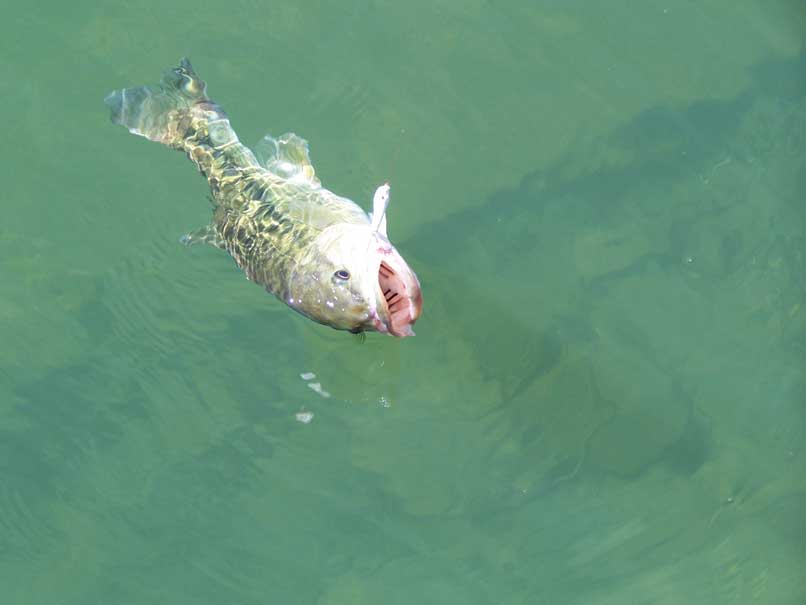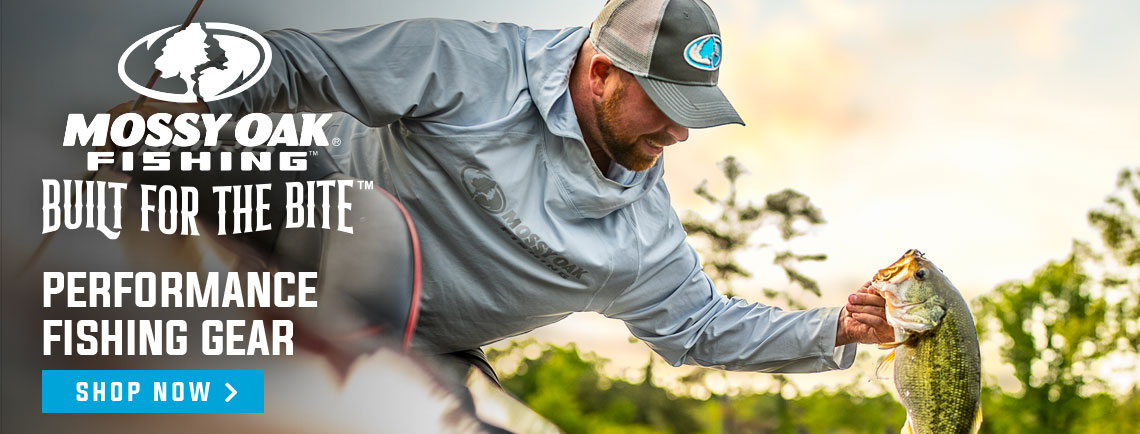Phillip Gentry

For every fishing season, a particular bait often comes to mind. For spring, it might be a spinnerbait, summer could be a buzzbait and fall may be a crankbait. Of course, there are a hundred other variables that come into play, but for wintertime fishing, a spoon is definitely going to be at the top of the list.
Anglers may argue over how many types of spoons there are. Some say five, some four and so on. Application is the best way to categorize spoons, jigging, casting or trolling. For this discussion, we’ll stick with the first two.
A jigging spoon is made from molded lead and its shape is symmetrical on both sides. Jigging spoons are heavy, being of solid lead, and are designed to be fished vertically, although there are other applications as well.
Flutter spoons are the typical concave spoon shape, made of stamped metal and are designed to be cast and fished more horizontally than vertically, although there are other applications.
Following these two types are hybrids of these and other spoons with applications that boil down to a matter of semantics. For winter fishing, we’ll stick with the jigging spoon and the flutter spoon, but mostly the jigging spoon.

WATCH NEXT: Winter Jig Fishing Tips
Before getting into how to present a spoon during the winter, an agreement on the species being targeted must be reached. To catch bass with spoons, you need to fish in winter bass habitat — ditto for walleye, striped bass, crappie, perch, etc.
In reality, spoons catch a variety of different species of fish due in large part to the reaction the bait elicits from any fish in the vicinity. With proper presentation, spoons provide an erratic flash, then a sudden stop, very closely mimicking a dying baitfish.
A jigging spoon fished vertically is typically dropped to the bottom or a desired depth, raised sharply with the rod tip and allowed to flutter back while keeping slight tension on the line. The reason for the tension is that fish frequently strike the bait during the fall and unless the hook bites on the strike, the fish will quickly spit the bait, making it incumbent on the angler to set the hook the second a change in the fall is detected.
Bear in mind that hooksets when fishing a spoon in open water are free of charge. When in doubt, set the hook. It costs nothing.

Spoons show great versatility in their ability to be fished extremely deep, extremely fast or extremely slow. In addition, a blowup on the surface is easily targeted with a jigging spoon because the bait is aerodynamic and casts like a bullet, even on a moderate test line.
While flutter spoons can be fished vertically and jigging spoons fished horizontally on a retrieve, when targeting suspended fish that might be spooked by the presence of the boat directly overhead, the flutter spoon is the better choice. This bait can be cast and counted down and then twitched or jerked during the retrieve so that it flutters more or less on a horizontal plane. It also excels as a deep-water search bait and can be fished vertically to find a target depth where fish are feeding.
Fish relating to the bottom, structure or the presence of schools of baitfish are all candidates to fall for a spoon. Even spoons rigged with treble hooks are surprisingly easy to retrieve when snagged. Note this did not read snag-proof, but the weight of the bait is an effective tool for working the hooks loose when encountering rocks or wood.
Because spoons work on reaction, having “flash” is a large part of the appeal. Chrome and gold are probably the most popular spoon finishes, especially in stained, dingy and even muddy water. The darker the water, the more likely gold will rise to the top of the list, but color/finish is also species-specific.
In clear water, chrome usually gets the nod, especially on sunny days. Colors and patterns usually come into play when clear water and fishing pressure are factors in the fish’s behavior.
By definition, spoons twist line due to their inherent vibration and frequent rotation in the water. It is often advisable to use a swivel somewhere between the bait and the rod. There is reasonable debate that a snap swivel attached directly to the bait itself impairs the intended movement of a spoon. There is also an unwanted tendency for the swivel to hang in the hook on the flutter portion of the retrieve or during the cast. This is known as getting the bait’s foot in its mouth. The originator of the term is uncredited but it fits. Adding a small inline swivel six to 18 inches ahead of the bait may be a better option or tie the line directly to the bait and allow for frequent hang times over the water to allow the line to untwist.
Lastly, a discussion about using spoons with real-time forward-facing sonar is in order. Due to their density, spoons create very distinguishable signatures on real-time sonar. The weight of the bait also gets it down in the water quickly, which is useful when targeting specific fish in real time. Ripping the bait to get a reaction may not be the first choice in presentation. Getting the bait in front of the fish and making short twitches or hops is probably the best place to start and then work on more aggressive moves from there.
When going after winter bass and walleye with heavy metal, a flutter spoon is a great option. It is easier to target suspended fish in a specific zone with a flutter spoon than many other baits. Most anglers believe bass do not eat as often in the winter as in the summer. Because of this, they prefer a bigger meal. That’s where the flutter spoon comes in. It is a great imitation of a bigger dying baitfish.
One of the complaints fishermen have when fishing a flutter spoon for bass is that they tend to bump the top of the spoon, resulting in fewer hook sets. You can now find spoons with a double hook that hangs from the eye to midway of the belly of the spoon. There is a magnet that keeps the hook tight against the spoon's belly. The hook midway up the spoon will help you set a hook in the bass that bumps the top of the flutter spoon.

Spoons are great for crappie and other panfish, too. When you have a big school of crappie, they are often aggressive because of the competition for baitfish. That's why a jigging spoon works great for winter crappie — not only for fishing through the ice but also for suspending crappie in deep water. Once you have caught one, you'll likely catch your limit. The added benefit is you didn't have to worry about keeping live bait alive.
Of course, with panfish, you can get by with a smaller spoon. If you notice the fish are finicky, you can start with a one-sixteenth-ounce spoon. If they are aggressive, try a one-eighth-ounce spoon instead. Even if the crappie is not feeding, if you keep antagonizing them with a spoon that is constantly in their face, you will often get a reactionary bite. That first bite often results in the rest of the school starting to bite. After that, it is a matter of keeping your jigging spoon in front of the fish.
Winter fishing with spoons is a fun and easy way to catch fish of any species. Spoons are inexpensive, and you're not searching for baitfish and hoping to keep them alive the entire trip. The techniques used to fish with spoons are not complicated, so fishing with either a jigging or flutter spoon is fun for the entire family. So bring the family, hot chocolate and a few spoons and enjoy fishing this winter.




























